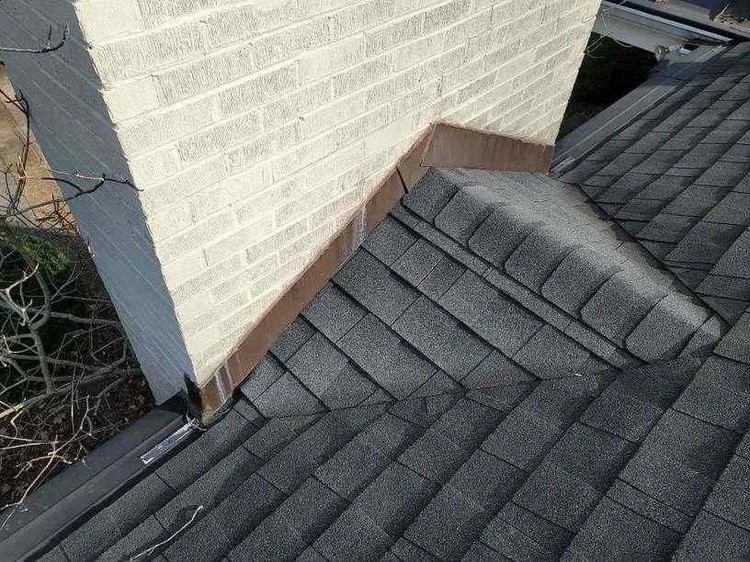- Understand how roof crickets help prevent water pooling and leaks
- Explore different types of roof crickets and where they’re used
- Learn if and when you should use a roof cricket on your home
When it comes to protecting your roof from water damage, the smallest details can make a big impact. One of the most important—but often overlooked—features is the roof cricket. Though subtle in appearance, this component can significantly improve drainage and prevent long-term roofing issues.
Let’s break down how they work, when to use them, and what options are available.
What is a roof cricket, and what is its purpose?
A roof cricket is a small, peaked structure that sits behind chimneys or similar vertical features on a sloped roof. Its primary purpose is to divert water away from these obstructions to prevent pooling, which can lead to leaks, rot, or interior damage.
By redirecting runoff around the chimney and toward the main roof drainage system, crickets help maintain the integrity of both the roofing material and the home’s structure. They are especially helpful on wide chimneys or low-slope roofs where water tends to collect.
Types of Roof Crickets
Crickets come in a few different designs and materials, depending on your roof’s configuration. Some of the most common include:
- Shingled crickets – Built with the same shingles used on your main roof for a cohesive look.
- Metal crickets – Made from galvanized steel or aluminum for extra durability and waterproofing, especially on low-slope areas.
- Custom-built crickets – Designed for slate, tile, or other specialty roofing materials, ensuring proper fit and drainage.
Choosing the right style depends on your roof’s pitch, chimney size, and the roofing materials in place. A properly fitted cricket will blend into the roof while enhancing its ability to manage water runoff.
When you should use a roof cricket
Not every roof requires a cricket, but there are several situations where adding one is highly recommended—or even required by code.
Consider using a roof cricket if:
- Your chimney is more than 30 inches wide
- Your roof has a shallow pitch where water tends to pool
- You live in an area with frequent rain or snow
- You’re replacing your roof and want to improve long-term protection
In these cases, crickets help prevent costly issues and extend the life of your roofing system. Even if not required, they’re a smart preventative feature.
Are roof crickets necessary?
Whether or not you need a cricket depends on your roof’s layout and drainage patterns. However, in many cases, they’re a vital addition.
Without one, water can build up behind a chimney or vertical wall, increasing the risk of:
- Roof leaks
- Flashing and underlayment damage
- Mold or mildew in the attic
- Rotting wood or insulation
Even if your roof isn’t leaking now, damage from trapped moisture can develop slowly and go unnoticed until it becomes a major repair. Adding a cricket is a small investment that helps avoid those long-term problems.
Keeping Your Roof Protected
A roof cricket might be small, but it plays a big role in roof performance—especially in areas where water pooling is a concern. Whether you’re installing a new roof or improving an existing one, it’s worth evaluating your drainage setup and determining whether a cricket should be part of your design.
Jack C Wilson Roofing has the experience to assess your roof and recommend solutions tailored to your home’s needs. From full roof replacements to upgrades like crickets, our team is here to ensure your roof stays protected for years to come.
Your roof deserves the best! Contact Jack C. Wilson Roofing for proven quality and lasting peace of mind.


